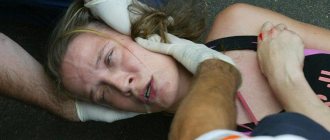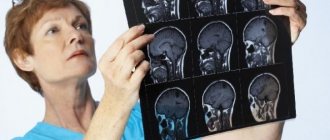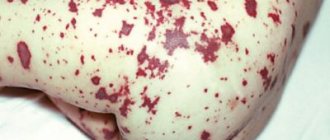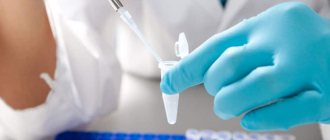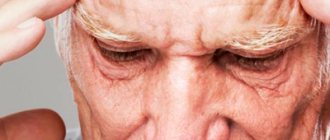Immunity to circulating serotypes of enteroviruses that cause meningitis is acquired in children by the age of 5 years.
Mom, it hurts!
Last year I visited my daughter in Khabarovsk. In the evening, an alarmed neighbor came to see us and complained that she couldn’t bring down her little daughter’s high fever. It all started like a banal ARVI. In the morning, four-year-old Masha had a fever. Natalya, as many mothers do, gave her an antipyretic, during the day she again tried to bring down the temperature with baby paracetamol and put her to bed.
At the time the woman came to us, the girl had already slept for several hours and did not wake up. To my surprise, this didn’t even alert my mother. To the question “Why didn’t you call the pediatrician?” Natasha replied: “But it’s good that the child is sleeping, which means the body is fighting the disease. Only it’s all hot again.” They woke up the girl to take her temperature: the mercury showed under forty. When the mother tried to give the baby something to drink, she could not raise her head: “Mom, it hurts!” An ambulance was urgently called. As we later found out, little Masha had serous meningitis. The girl was lucky that doctors quickly diagnosed her and put her in intensive care. If mom had waited any longer, everything could have ended sadly.
As infectious disease specialists note, a common mistake that parents make is when they themselves try to bring down a child’s high temperature and do not sound the alarm. A high fever is a sign that inflammation is getting worse. And the time when it is necessary to take emergency measures is running out.
Serous - not the worst
— Meningitis is inflammatory changes in the membranes of the brain. This is a dangerous condition that needs to be stopped in time to avoid complications in the future. And they can be severe, it all depends on the body,” says Professor Valentin Figurnov, head of the Department of Infectious Diseases of the ASMA. “We have had cases where people became completely deaf after suffering from meningitis. Viral or serous meningitis is more common than bacterial meningitis and is milder. The main thing is to see a doctor immediately. Because the symptoms and clinical picture are diverse. The disease can begin as a banal intestinal infection, tonsillitis, or can occur in the form of ARVI. But always suddenly and acutely: with fever, headache, photophobia, general weakness.
Most viral meningitis is associated with enteroviruses, which cause intestinal diseases. And children are most susceptible to viruses, especially under the age of three. This is exactly the age when the body’s defenses have not yet been formed. In addition, children observe less personal hygiene and put everything in their mouths. Schoolchildren get sick a little less often.
The source of enterovirus infection is a sick person or animal, and the virus is transmitted through water, vegetables, fruits, food, and dirty hands. It can also be transmitted by airborne droplets in large crowds of people. Of course, it would be better not to take children with you on walks in shopping centers and other crowded places. If you take it, then at least lubricate the baby’s nose with oxolinic ointment, and then rinse the nose at home, for example, with aquamarine.
But most often, infection occurs while relaxing outdoors or swimming in open water. Therefore, bathe so that water does not get into your mouth. And before handling any product, rinse your hands with clean water. Drink yourself and give your children only boiled or bottled water.
Pointing Dog Pose
Every mother should know the symptoms of meningitis and immediately call a doctor if her child:
- heat;
- multi-point rash on the body;
- immobility of neck muscles;
- sensitivity to light (usually such patients lie with their heads turned to the wall and covered with a blanket);
- unusual poses that the child takes: the head is thrown back, and the legs are bent at the knees and pulled up. Doctors call this the “pointing dog” position.
If you lift the head of a sick child lying on his back and he involuntarily bends his knees, then this is an alarming symptom that may indicate meningitis.
Valentin Figurnov , head of the department of infectious diseases of ASMA:
— Ticks are sometimes carriers of the virus, infection of which can lead to meningitis. Two years ago we had such cases. One patient died immediately, the second was a ten-year-old boy. In addition to tick-borne encephalitis, he had a meningococcal infection, which led to purulent meningitis. While he was taken from the northern village to Blagoveshchensk, the child fell into a coma. His parents took him to Moscow for treatment. Unfortunately, I don’t know his further fate. And the third patient then recovered. Immediately after the tick bite, he went to the doctors and was given an anti-encephalitis vaccine. The “dead virus” contained in the vaccine stimulated the body to produce antibodies. This saved him.
Enterovirus , which causes serous meningitis, persists for a long time in the external environment. In reservoirs - up to three months, in drinking tap water - up to 18-25 days, on food - vegetables, fruits, berries - up to 70 days. Dies under the influence of high temperatures.
Age category of materials: 18+
- Irina Anatolyeva
- Amurskaya Pravda from 07/04/2013
Heat
The patient's temperature rises sharply - up to 40°C - and fever begins. This is one of the first signs of meningitis. An unfavorable symptom is body temperature below normal. There is also a localized form of meningitis, when the infected person himself is not sick, but is a carrier of the infection, or the disease is mild, resembling ARVI. Then the temperature reaches 38°C. Doctors recommend going to the hospital even if you suspect localized meningitis, as the disease can become severe.
Photo: spinoff.com
Meningeal syndrome: causes and treatment
Meningeal syndrome is a lesion of the cerebral membranes of the brain, resulting in headaches, vomiting, muscle rigidity and other unpleasant symptoms.
It can develop as a result of infections, injuries, severe poisoning, diseases of the vascular system and some other pathologies.
It is considered a fairly common pathology, has a large number of risk factors, and affects people regardless of gender and age. However, in older patients the symptoms are less clear.
What are meningeal syndromes?
The name of the syndrome comes from the Latin word "meningea", meaning "meninges".
Meningeal syndromes can occur with or without inflammation of the membranes. If there are no changes in the tissues caused by inflammation, but there is a focus of pathological irritation, doctors use the name “meningism” to differentiate the conditions. Typically, this applies to cases of toxic effects on the brain.
This syndrome is the basis for the manifestation of meningitis. How does it manifest itself? There are three groups of symptoms that combine with each other.
General cerebral symptom complexes
General cerebral manifestations of meningeal syndrome include:
- Disorders of consciousness (stupefaction, constant drowsiness, stupor, varying degrees of coma);
- excruciating bursting headache; can be localized in the forehead, back of the head, temples, aggravated by light and sounds;
- sudden vomiting not associated with food intake, after which the pain decreases.
General infectious symptoms
- General weakness.
- High temperature, fever.
- Muscle spasms with cold sensation.
- Skin rash.
- Signs of the disease that caused the syndrome (see Causes).
Meningeal manifestations
- Seizures in one or more parts of the body.
- intolerance to loud sounds, bright light;
- tonic muscle tension;
- pathological dysfunction of the nerves in the head area; manifested by strabismus, tinnitus, drooping eyelids, double vision, impaired facial expressions, hearing, and vision;
- inhibition of some reflexes, pain in the muscles, eyes, or, conversely, impaired sensitivity in parts of the body.
Causes of the syndrome
There are many reasons for the development of meningeal syndrome. All of them are divided into two large groups. One group causes a syndrome with inflammation of the membranes, the other - without inflammation.
Inflammatory lesions:
- Viral. Most often caused by enteroviruses (in 75% of cases). Less commonly - pathogens of herpes, tick-borne encephalitis, Epstein-Barr virus, arenavirus.
- Bacterial. Specific lesions are caused by bacteria of syphilis and tuberculosis.
Nonspecific - meningococci, streptococci, pneumococci, Haemophilus influenzae.
In addition, nonspecific lesions in newborns can be caused by E. coli and salmonella.
- Fungal. Fungi cause serous inflammation of the meninges with petechial hemorrhages. The provocateurs of the process can be candida, histoplasma, cryptococci, aspergillus.
- Protozoal lesions are a consequence and one of the manifestations of malaria and toxoplasmosis.
Non-inflammatory lesions
They also vary and imply a number of diseases that provoke meningeal syndrome:
- Hemorrhages in the meninges. The causes may be acute cerebrovascular accident (ACVA), cerebral vasculitis, traumatic brain injury, arterial hypertension.
- Increased intracranial pressure (intracranial hypertension). Occurs with hydrocephalus, as well as with space-occupying formations inside the brain: tumors, abscesses, hematomas, intracranial cysts.
- Neurotoxicosis. Possible complication of viral and infectious diseases: influenza, ARVI, otitis media, typhus, dysentery.
- Intoxication (poisoning) of the brain.
Endogenous (internal) causes: uremia, hypoparathyroidism. Exogenous (external) reasons: alcoholism, drug addiction, substance abuse, work in hazardous (paint and varnish, etc.) industries.
- Carcinomatosis. This is the infiltration of the meninges by tumor cells in cancer. With neuroleukemia, leukocyte infiltration occurs.
Diagnosis of the syndrome
Doctors from a number of specializations are involved in identifying meningeal syndrome. These are therapists, pediatricians, neurologists, infectologists (infectious disease specialists).
Experts are studying the clinical picture of the disease. Be sure to check for signs of sinusitis, otitis, and rashes on the skin - meningococcal meningitis can be accompanied by a bright red rash in the form of stars on the torso and legs.
Neurologists and general practitioners consider about 30 symptoms that can help determine the presence of meningeal syndrome. All of them are associated with reflexes when being in certain positions.
Kernig's sign - with the patient lying on his back, the doctor bends his leg at the hip and knee joints, then tries to straighten it at the knee. This turns out to be impossible, because a tonic contraction of the lower leg muscles occurs.
Brudzinski's symptoms - when lying on your back, involuntary pulling of the legs towards the stomach occurs:
- when the patient bends his head (upper symptom);
- when pressing on the pubis (medium symptom);
- when checking Kernig's sign (lower symptom).
Edelman's symptom - when checking the Koegning symptom, extension of the big toe is noted.
Netter's symptom - in a sitting position, legs stretched out, when pressing on the knee of one leg, involuntary flexion of the other limb occurs.
Kholodenko's symptom - when trying to lift the patient by the shoulders, the knees bend.
Guillain's sign - with the patient lying on his back, legs straightened, compression of the muscles of the anterior thigh of one leg leads to flexion of the other. The patient experiences general hyperesthesia: intolerance to loud sounds, bright lights, and touches.
Laboratory and hardware diagnostic methods are also used.
Ophthalmoscopy and echoencephalography are performed to exclude intracranial hypertension. In its absence, the patient is indicated for a lumbar puncture - a very important test that allows one to accurately determine the type of disease.
Important! To prescribe the correct treatment, it is necessary to accurately establish its etiology and exclude diseases with similar symptoms.
In order to establish the etiology of meningeal syndrome, a study of cerebrospinal fluid (CSF) is performed. If cancer cells are found in the cerebrospinal fluid, this will indicate the presence of a malignant tumor.
When there is bleeding in the lining of the brain, an admixture of blood components is detected in the cerebrospinal fluid. Turbidity of the fluid with an increased concentration of neutrophil cells indicates purulent inflammation.
With serous inflammation, the content of leukocytes in the cerebrospinal fluid will be increased.
The diagnosis is clarified using bacteriological and virological analysis of cerebrospinal fluid, MRI of the brain, EEG, bacterial blood culture, and PCR studies.
Features of the development of the syndrome in children
In children, meningeal syndrome develops due to infection during pregnancy, childbirth, and in the first weeks of life. The cause may also be a head injury, such as a concussion.
Symptoms in newborns may be mild. The most noticeable signs are bulging or sinking of the large fontanelle, as well as a depressed state of the central nervous system. The child is always sleepy, lethargic, muscle tone is reduced (muscle hypotonia), movements are limited.
In the first days after birth, it is no coincidence that doctors often check the child for the presence or absence of reflexes. This is directly related, among other things, to the diagnosis of meningeal syndrome.
The baby may have impaired reflex activity of various muscle groups, which makes it difficult for him to suck the breast and swallow food. Trembling of the arms, legs, and chin is often observed.
The child is inactive, but at the same time restless, often irritated, and screams pitifully. Characterized by a sudden strong cry during sleep.
For diagnosis, pediatricians use the so-called Lessage symptom (suspension). Its essence is that if you hold the baby vertically in the air at armpit level, he involuntarily pulls his legs towards his stomach.
When examining a newborn, disturbances in breathing, eye movement, and pupil dilation-constriction reflexes are often detected. This indicates disruption of the brain stem.
Therapy methods
The patient needs urgent hospitalization. Comprehensive treatment is provided in a hospital setting. The clinical picture and etiology of the disease are taken into account.
Depending on the symptoms, therapy is prescribed that prevents the increase in new symptoms and stops existing ones. For high blood pressure, antihypertensive drugs are prescribed.
Important! It should be remembered that it is necessary to lower blood pressure with caution, avoiding sudden changes.
If psychomotor agitation is pronounced, psychotropic drugs are used. Signs of epileptic paroxysm are relieved by anticonvulsants. For repeated vomiting, antiemetics are indicated.
Glucocorticosteroids and diuretics are prescribed to prevent cerebral edema. In accordance with the etiology of the syndrome, the following can be used:
- Broad-spectrum antibiotics – for bacterial etiology;
- antiviral drugs - if the cause of the syndrome is a viral disease;
- antimycotics – for fungal origin of meningeal syndrome.
Medicines are also prescribed to remove toxins from the patient’s body. Treatment of the initiating disease is mandatory, i.e. the illness that became the root cause.
Consequences and complications
Most often, timely treatment of meningeal syndrome leads to complete recovery of the patient. But for several more weeks, or even months, residual symptoms may appear: asthenia, emotional lability, cephalgia, intracranial hypertension.
A less favorable prognosis for oncology, the rapid development of an infectious disease, and severe damage to the central nervous system.
Important! Untimely treatment of meningeal syndrome leads to severe complications.
Prevention methods
- Prevention and timely treatment of infectious and inflammatory diseases.
- If cardiovascular pathologies are detected, treat them in a timely manner.
- Improving immunity: hardening, sports, proper nutrition, adequate rest.
- Avoiding the use of alcohol and drugs.
- Avoiding injuries and dangerous situations.
- Careful handling of harmful chemicals, compliance with safety precautions when working in hazardous industries.
Source: https://onevrologii.ru/sindromy/meningealnyj-sindrom
Meningeal symptoms (signs) in adults and children. Meningism. Causes, symptoms, clinic
Meninges.
Source: ru-babyhealth.ru Meningeal symptoms (also known as meningeal signs) are symptoms of irritation of the meninges and the cause of the formation of a symptom complex called meningeal syndrome in neurological practice.
Meningeal syndrome due to meningitis
The importance of its timely detection in meningitis is high.
Its presence is a “red flag” for the doctor and a matter of excluding or confirming its infectious nature.
The symptoms of meningitis were first described by Hippocrates, but the first documented outbreak of the disease occurred in Geneva (1805). Later (1830) it broke out in North America, and 10 years later - in Africa. In the Russian Empire, epidemic meningitis was recorded in 1863 in Kaluga, and in 1886. in Moscow.
Meningeal syndrome covers symptoms (s) of damage to the meninges, both inflammatory and infectious and non-inflammatory in nature.
Causes of inflammatory infectious lesions:
- Bacteria (meningococcus, pneumococcus, group B streptococci, listeria, M. tuberculosis, Haemophilus influenzae);
- Viruses (enteroviruses, arboviruses, cytomegalovirus, HSV type 1, type 2);
- Fungi (Candida, cryptococcus);
- Spirochetes (Treponema pallidum, Borrelia, Leptospira).
Causes
What diseases cause irritation of the meninges:
- Hemorrhage into the membranes of the brain during hemorrhagic stroke (intracerebral hemorrhage), traumatic brain injury (intracranial hemorrhage: subarachnoid, subdural, epidural);
- High intracranial pressure (ICP) due to hydrocephalus, abscess - any space-occupying formations (cysts, tumor);
- Intoxications: a) exogenous: alcohol, abuse of various chemicals, work in paint factories; b) endogenous: hypoparathyroidism, poisoning of the body with products of protein metabolism due to impaired renal function.
- Tumor metastases to the meninges
- Meningitis of any origin. Why it’s dangerous read here
Symptoms of meningeal irritation
- headache accompanied by nausea/vomiting, often diffuse and more pronounced in the frontal and occipital parts
- stiffness of the neck muscles, Kernig and Brudzinski syndromes
- increased sensitivity to external stimuli (sound, light, etc.)
), - heart rhythm disturbances (with the development of both tachycardia and bradycardia)
- “pointing dog” pose (the torso is extended, the head is thrown back, the “scaphoid” stomach is retracted, the arms are pressed to the chest, and the legs are drawn to the abdominal area - an involuntary position of the body).
- impaired consciousness - in severe cases
- decreased/absent tendon and abdominal reflexes
Vomiting (not associated with food intake) and bradycardia - due to irritation of the vagus nerve with its nuclei or the vomiting center of the reticular substance of the medulla oblongata.
Intense headache, tachycardia, vomiting are general cerebral symptoms indicating increased ICP and changes in the composition of the cerebrospinal fluid.
about what cerebrospinal fluid (CSF) is and how it is examined here
Both types of heart rhythm disturbances: tachycardia and bradycardia occur when the meninges are irritated.
Meningeal signs: what are they and how to check for them?
Meningeal sign: Kernig's sign.
For timely diagnosis in neurology, the doctor must know meningeal syndrome, imagine what it is and how to check for its presence when examining the patient.
If meningeal signs are negative, the diagnostic search for the causes of the disease continues in other directions. In medical documentation, their absence may be referred to as abs.
If they are positive, the examination reveals the following signs:
Meningeal symptoms by author:
- Rigidity of the neck muscles due to tense neck muscles at the back when the doctor tries to bend the patient's head forward.
A characteristic tilting of the head appears. Any attempt to change a fixed position causes pain. In this case, the distance from the chin to the sternum is indicated in centimeters or in the diameter of the index finger of an adult (pp). - Kernig's sign (S-m) is an important sign that appears early: the patient, who is lying on his back, bends his leg at an angle of 90 degrees at the hip and knee joints and tries to fully straighten it at the knee.
But there is pain and reflex irritation of the leg flexors, which prevent extension. - Brudzinski's symptoms:
– Buccal – pressure is applied to the cheek of the subject and the arms are bent at the elbows absolutely involuntarily; the patient also shrugs his shoulders.
– Upper – the doctor tries to bend the patient’s head and at the same time the legs of the patient are bent and pressed against the stomach.
– Medium – while pressing on the pubic area, the patient’s legs bend.
– Lower – the examiner bends the patient’s leg in 2 joints (knee, hip), the other leg repeats the movements.
- S-Ankylosing spondylitis - when you tap your finger on the cheekbone, a sharp headache and a painful grimace appear - contraction of the facial muscles on the same part of the face.
- S-Gordon - the doctor grabs the patient’s shin and squeezes it tightly, as a result of this the big toe unclenches, the fingers move in different directions.
- S-Guillain - the doctor presses/squeezes the surface of the patient’s thigh (front) and the leg on the other side bends at the knee.
- S. Kerera : when palpating the exit points of the trigeminal nerve, the pain intensifies.
- Herman's sm : the examiner tilts the subject's head forward and the patient, who lies on his back with straight legs, extends his big toe.
- Sm Lafora : facial features become sharper.
- S-Flatau : the pupils dilate when the examiner tries to tilt the subject’s head forward.
- Bickel's method : the subject is asked to bend his arms at the elbows and not resist the examiner, however, passive extension of the arms cannot be carried out due to resistance.
- S-Mandanesi – the facial muscles tense when pressing on the eyeballs.
- Levinson's method : when the patient tries to tilt his head forward, his mouth opens.
Meningeal symptoms (signs) in children and newborns
“Spotting dog” pose for meningeal syndrome.
There are certain features in the manifestation of meningeal symptoms in children. As Bekhterev once noted, in newborns Kernig’s syndrome is physiological. It appears a few hours after birth, and is pronounced in the first month of life, and disappears only by the end of the 3rd (rarely 6th) month.
In children under 3 years of age, a pronounced picture of meningeal syndromes is rare.
The presence of headaches in infants can only be judged by the child’s general restlessness and crying (monotonous for no reason or screaming during sleep). Vomiting occurs (involuntary or when changing body position).
Characteristic symptoms of increased ICP in infants include protrusion, tension of the fontanelles, weak pulsation and their absence.
In children under 3 years of age, just like in adults, stiff neck muscles occur, according to Kernig and Brudzinsky.
A distinctive symptom is Lessage or “suspension”: the child is taken by the armpits, the head is supported from behind with the index fingers, and the child is lifted up (positive if the legs are involuntarily pulled towards the stomach and are fixed in a bent state for a long time). Meningeal syndromes in children over 3 years of age are no different from the same syndromes in adults.

